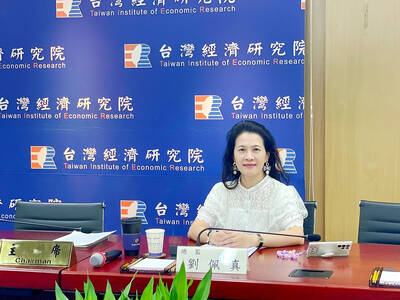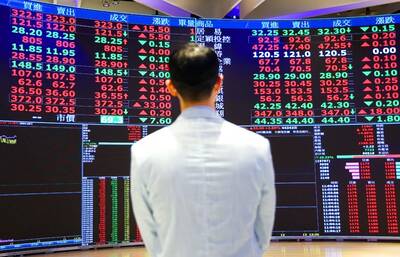The total production of the medical equipment sector for the first three quarters of this year amounted to NT$38.6 billion (US$1.2 billion), up 6.3 percent year-on-year, statistics released yesterday by the Industrial Technology Research Institute (ITRI,
An official with ITRI's Industrial Economics and Knowledge Center said that the growth could mainly be attributed to the considerable increase in the nation's exports of glucose meters, invisible glasses and medical consumptive materials.
EXPORT JUMP
According to customs statistics, the nation exported NT$21.4 billion in medical equipment between January and the end of September.
That figure represents an increase of 7 percent over the same period last year.
GLUCOSE METERS
Exports of glucose meters saw a growth of 40.5 percent over last year's figure.
The statistics also showed that plastic products for laboratory, sanitary and medical use had jumped by 77.4 percent in comparison with the same period last year.
Meanwhile, imports of medical equipment also increased this year.
Taiwan imported NT$27.7 billion in medical equipment in the first three quarters of the year, representing an 8 percent increase over the corresponding period last year.
The jump was mainly a result of the increase in imports of renal dialysis-related products.

A proposed 100 percent tariff on chip imports announced by US President Donald Trump could shift more of Taiwan’s semiconductor production overseas, a Taiwan Institute of Economic Research (TIER) researcher said yesterday. Trump’s tariff policy will accelerate the global semiconductor industry’s pace to establish roots in the US, leading to higher supply chain costs and ultimately raising prices of consumer electronics and creating uncertainty for future market demand, Arisa Liu (劉佩真) at the institute’s Taiwan Industry Economics Database said in a telephone interview. Trump’s move signals his intention to "restore the glory of the US semiconductor industry," Liu noted, saying that

On Ireland’s blustery western seaboard, researchers are gleefully flying giant kites — not for fun, but in the hope of generating renewable electricity and sparking a “revolution” in wind energy. “We use a kite to capture the wind and a generator at the bottom of it that captures the power,” said Padraic Doherty of Kitepower, the Dutch firm behind the venture. At its test site in operation since September 2023 near the small town of Bangor Erris, the team transports the vast 60-square-meter kite from a hangar across the lunar-like bogland to a generator. The kite is then attached by a

Foxconn Technology Co (鴻準精密), a metal casing supplier owned by Hon Hai Precision Industry Co (鴻海精密), yesterday announced plans to invest US$1 billion in the US over the next decade as part of its business transformation strategy. The Apple Inc supplier said in a statement that its board approved the investment on Thursday, as part of a transformation strategy focused on precision mold development, smart manufacturing, robotics and advanced automation. The strategy would have a strong emphasis on artificial intelligence (AI), the company added. The company said it aims to build a flexible, intelligent production ecosystem to boost competitiveness and sustainability. Foxconn

STILL UNCLEAR: Several aspects of the policy still need to be clarified, such as whether the exemptions would expand to related products, PwC Taiwan warned The TAIEX surged yesterday, led by gains in Taiwan Semiconductor Manufacturing Co (TSMC, 台積電), after US President Donald Trump announced a sweeping 100 percent tariff on imported semiconductors — while exempting companies operating or building plants in the US, which includes TSMC. The benchmark index jumped 556.41 points, or 2.37 percent, to close at 24,003.77, breaching the 24,000-point level and hitting its highest close this year, Taiwan Stock Exchange (TWSE) data showed. TSMC rose NT$55, or 4.89 percent, to close at a record NT$1,180, as the company is already investing heavily in a multibillion-dollar plant in Arizona that led investors to assume